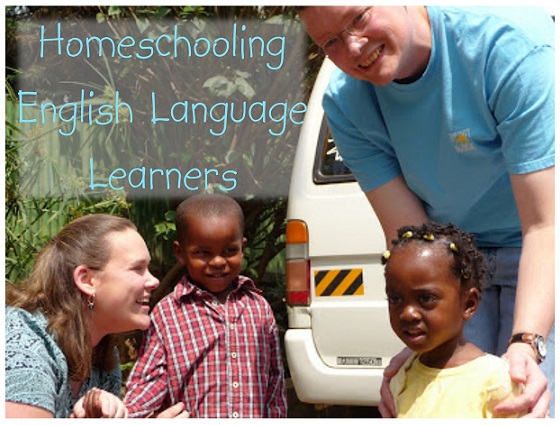Not even knowing who they were, I loved them fiercely. In November 2009, I laid eyes on their sweet faces. For four months, I memorized every detail of their photographs and poured over every word of our periodic updates. Then, finally, February 15, 2010, in Addis Ababa, Ethiopia, I was able to meet two of my beautiful children for the first time. My longing arms were filled!
These precious little ones had lost more in their 3 and 5 years than anyone ever should, so the number one priority upon bringing them home was bonding and building healthy attachments. I loved them with every ounce of my being, but I didn’t “know” them. I couldn’t tell you their likes, dislikes, fears, favorites, etc. So from February through the summer months, we spent time getting acquainted, building trust, and making memories. It was imperative that Jeremiah and Rachel know that we loved them unconditionally and that we were a forever family.
During this assimilation to all things new: sights, sounds, tastes, smells, underwear, seatbelts, electronics, etc., language acquisition was also a focus. The children came home speaking no English, but within 2 weeks, Jeremiah was speaking 45 words and understood even more. Rachel had a more difficult time catching on largely due to age and the fact that she never acquired either of her first two languages. To increase vocabulary and understanding, I narrated every minute detail of the day. “We’re eating chicken nuggets for lunch today. There are 1, 2, 3, 4, 5 chicken nuggets on your round, blue plate. Chickens say, “Bock, Bock, Bock!” Chickens are birds.” Yes, it was more torturous than Barney, Teletubbies, Wiggles, and Dora’s absentmindedness regarding the whereabouts of her map. Nevertheless, it worked. The kiddos had fabulous conversational English. I was so blown away by the progress made that I was convinced that this homeschooling gig would be easy.
I purchased a well-known, literature-rich, boxed curriculum from one of the homeschool classified sites, and I was so excited to begin in the fall. I envisioned zipping through phonics and math lessons in the mornings and our afternoons cuddled on the couch reading classics. Apparently, I was delusional, because our days appeared nothing of the sort. We (yes, that includes me) were often crying after phonics, too weary to do math, and in way over our heads with the reading. My son Caleb was loving all of the fantasy-based books, but Jeremiah and Rachel were baffled by fairytales. My literal realists were not believers in the ridiculous and outlandish. Puns, metaphors, colloquialisms, hyperbole all were completely lost on them.
Obviously, my preconceived homeschooling notions came to a screeching halt, and a new plan had to be made. I’d like to say 3 years in that we have it all figured out, but we are still dealing with learning glitches and have more days with tears than I’d like. However, I think I’ve gained a bit of understanding and a few tips and tricks along the way that may be helpful for those homeschooling English Language Learners.
1. Directions/Instructions Must Be Taught
An ELL student completely masters conversational English in 2 years, but it can take up to 5 years to fully comprehend academic/cognitive language. This makes perfect sense (after the fact). How often do we use words such as: explain, describe, compare, contrast, list, trace, etc. in our daily conversations? Rarely! I found that many times it wasn’t the content that was creating the problems and frustrations for my kiddos. It was what I was asking them to do with it. I believe, a lot of time spent early on ensuring children understand the definitions of academic language will eliminate unnecessary struggles throughout homeschooling.
2. Read Non-fiction
I suggest casting the fairytales and fables aside for a time. Grab books about animals, weather, people, places, and seasons. Read and make real-life connections. Photographs opposed to illustrations are also helpful in the early stages. A good children’s picture dictionary or the various first thousand words books are great tools as well. Look at and discuss a few pages each day.
3. I Do, We Do, You Do
In all subjects, model, model, model! After you demonstrate, complete the work together. Once there is a level of understanding, transition the child to working independently.
4. Have Fun, Show What You Know, & Celebrate
If learning is a game, a craft, a field trip, or something else enjoyable, often the fear of failure is eliminated. When that is missing, children’s minds are primed and eager to take in new information. Then, give them the opportunity to “show off” what they know. A little praise and congratulations from Dad, family, and friends goes a long way. Remember to celebrate even the smallest learning victories!
5. Take Breaks Often
When you hit walls and frustrations are growing, put the books, papers, and projects away. When the tears are flowing and you hit shut down, no learning is taking place. Damage is being done. Relationships are always more important! You will be Mom a lot longer than you will be struggling with phonics and fluency or administering math tests. Children need to know that their value and worth and your love for them is not based upon academic performance.
Angela Wells blogs at The Wellspring of Life. She is fearfully and wonderfully made by the ONE true God. She is His adopted child and seeks to follow and serve Him daily. Angela is the wife to her wonderful hubby, Jon, and is blessed to be called Momma by Jeremiah, Caleb, Rachel, and Eden. She is a homeschooler and adoption/orphan care advocacy is her great passion.


good words for any home learning environment